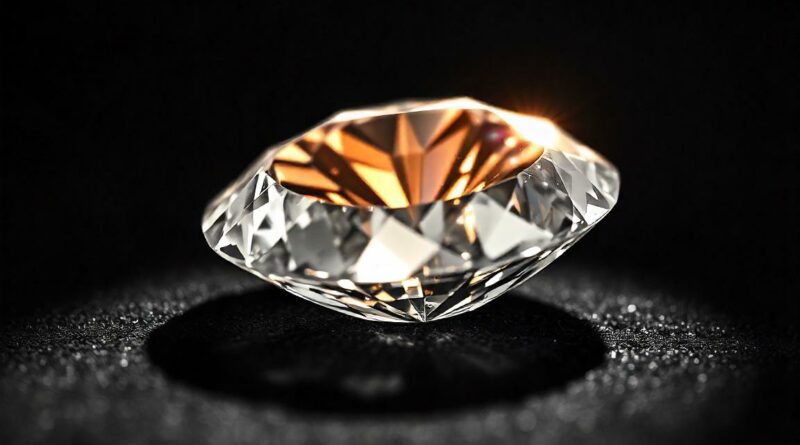Lab-Grown Diamonds for Different Jewelry Styles: A Comprehensive Guide
What Are Lab-Grown Diamonds?
Lab-grown diamonds are man-made gemstones created in controlled environments using advanced technological processes. These diamonds have the same physical, chemical, and optical properties as natural diamonds, making them a popular and sustainable alternative.
How Lab-Grown Diamonds Are Created
Lab-grown diamonds are produced through two primary methods:
- High-Pressure High-Temperature (HPHT): This process mimics the natural diamond formation by applying high pressure and temperature to carbon.
- Chemical Vapor Deposition (CVD): In this method, carbon-rich gases are broken down in a chamber, and carbon atoms deposit onto a diamond seed, layer by layer.
Benefits of Lab-Grown Diamonds
- Ethical Sourcing: Unlike natural diamonds, lab-grown diamonds are conflict-free.
- Eco-Friendly: Creating lab-grown diamonds typically has a lower environmental impact compared to mining.
- Cost-Effective: These diamonds are generally 20-40% less expensive than natural diamonds.
- Customizable: Lab-grown diamonds can be tailored to specific sizes, shapes, and qualities.
Grading and Certification
Just like natural diamonds, lab-grown diamonds are evaluated using the 4Cs: Cut, Clarity, Color, and Carat.
The 4Cs
- Cut: Refers to how well the diamond is shaped and faceted to reflect light.
- Clarity: Measures the presence of inclusions or blemishes.
- Color: Ranges from colorless to light yellow or brown.
- Carat: Indicates the diamond’s weight and size.
Understanding Diamond Certification
Certification ensures a diamond’s quality and authenticity. Reputable organizations grade and certify diamonds to provide buyers with confidence.
Types of Certification
- GIA (Gemological Institute of America): Known for its rigorous grading standards.
- AGS (American Gem Society): Focuses on cut and light performance.
- IGI (International Gemological Institute): Commonly used for lab-grown diamonds.
Lab-Grown Diamond Jewelry Types
Lab-grown diamonds are versatile and can be used in various types of jewelry.
Rings
- Engagement Rings: Classic solitaire, halo, or three-stone settings.
- Wedding Rings: Elegant designs for everyday wear.
- Anniversary Rings: Celebrate milestones with eternity bands or unique styles.
Earrings
- Stud Earrings: Timeless and simple.
- Drop Earrings: Add sophistication and movement.
- Huggie Earrings: Chic and modern designs that hug the earlobe.
Necklaces
- Solitaire Necklaces: A single diamond for a minimalist look.
- Cluster Necklaces: Multiple diamonds for added brilliance.
- Tennis Necklaces: A continuous line of diamonds for luxury.
Bracelets
- Tennis Bracelets: A classic and refined choice.
- Cuff Bracelets: Modern and bold designs.
- Bangle Bracelets: Perfect for stacking or wearing alone.
Settings and Metals
The setting and metal choice play a crucial role in the overall look and durability of the jewelry.
Common Settings
- Prong Setting: Secures the diamond with small metal claws.
- Bezel Setting: Encircles the diamond for a sleek, modern look.
- Tension Setting: Uses pressure to hold the diamond, creating a floating effect.
Popular Metals
- Gold: Available in white, yellow, and rose gold.
- Platinum: Durable and hypoallergenic.
- Silver: Affordable and versatile.
Care and Maintenance
Proper care ensures that your lab-grown diamond jewelry remains beautiful for years to come.
Cleaning and Maintenance
- Use a soft brush and mild soap to clean your jewelry regularly.
- Avoid harsh chemicals that could damage the metal or diamond.
Storage and Handling
- Store jewelry separately to prevent scratches.
- Use a soft pouch or jewelry box with compartments.
Repair and Resizing
- Work with a professional jeweler for repairs or resizing to maintain the integrity of your jewelry.
Lab-Grown Diamonds vs. Natural Diamonds
Comparison of Characteristics
- Both have identical optical and physical properties.
- Lab-grown diamonds are created in weeks, while natural diamonds take billions of years to form.
Comparison of Prices
- Lab-grown diamonds are more affordable due to their efficient production process.
Comparison of Environmental Impact
- Lab-grown diamonds are eco-friendlier as they avoid mining, which can harm ecosystems.
Trends and Education
Current and Emerging Trends
- Customizable Jewelry: Personalized designs are gaining popularity.
- Colorful Diamonds: Lab-grown diamonds in hues like pink and blue are trending.
- Sustainable Choices: More consumers are opting for eco-conscious options.
Resources for Learning
- Educational blogs, videos, and guides from trusted brands.
- Workshops and virtual consultations with jewelers.
Tips for Buying Lab-Grown Diamond Jewelry
- Choose certified diamonds for quality assurance.
- Compare prices and styles across brands.
- Look for warranties and return policies.
Brands and Warranty
Popular Lab-Grown Diamond Jewelry Brands
- Brilliant Earth: Known for ethical and sustainable practices.
- Lightbox Jewelry: Offers affordable and stylish options.
- VRAI: Focuses on elegant, timeless designs.
Understanding Warranty and Return Policies
- Check for lifetime warranties covering repairs and maintenance.
- Ensure return policies allow flexibility in case of dissatisfaction.
Lab grown diamonds are revolutionizing the jewelry industry with their ethical, sustainable, and cost-effective appeal. Whether you’re looking for an engagement ring, earrings, or a statement necklace, lab-grown diamonds offer endless possibilities without compromising on quality or beauty. By understanding their unique attributes and care requirements, you can confidently embrace this modern innovation in fine jewelry.




